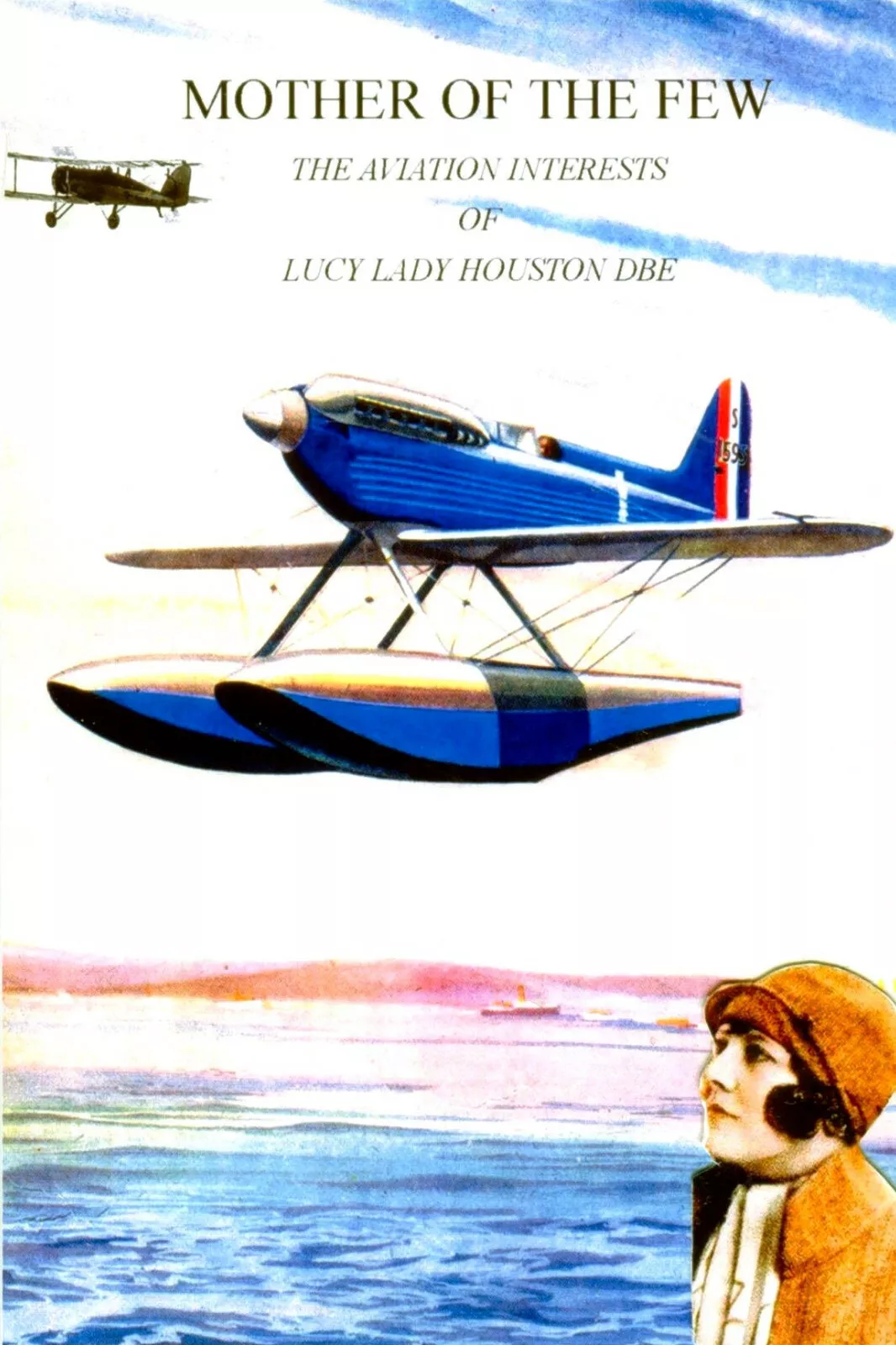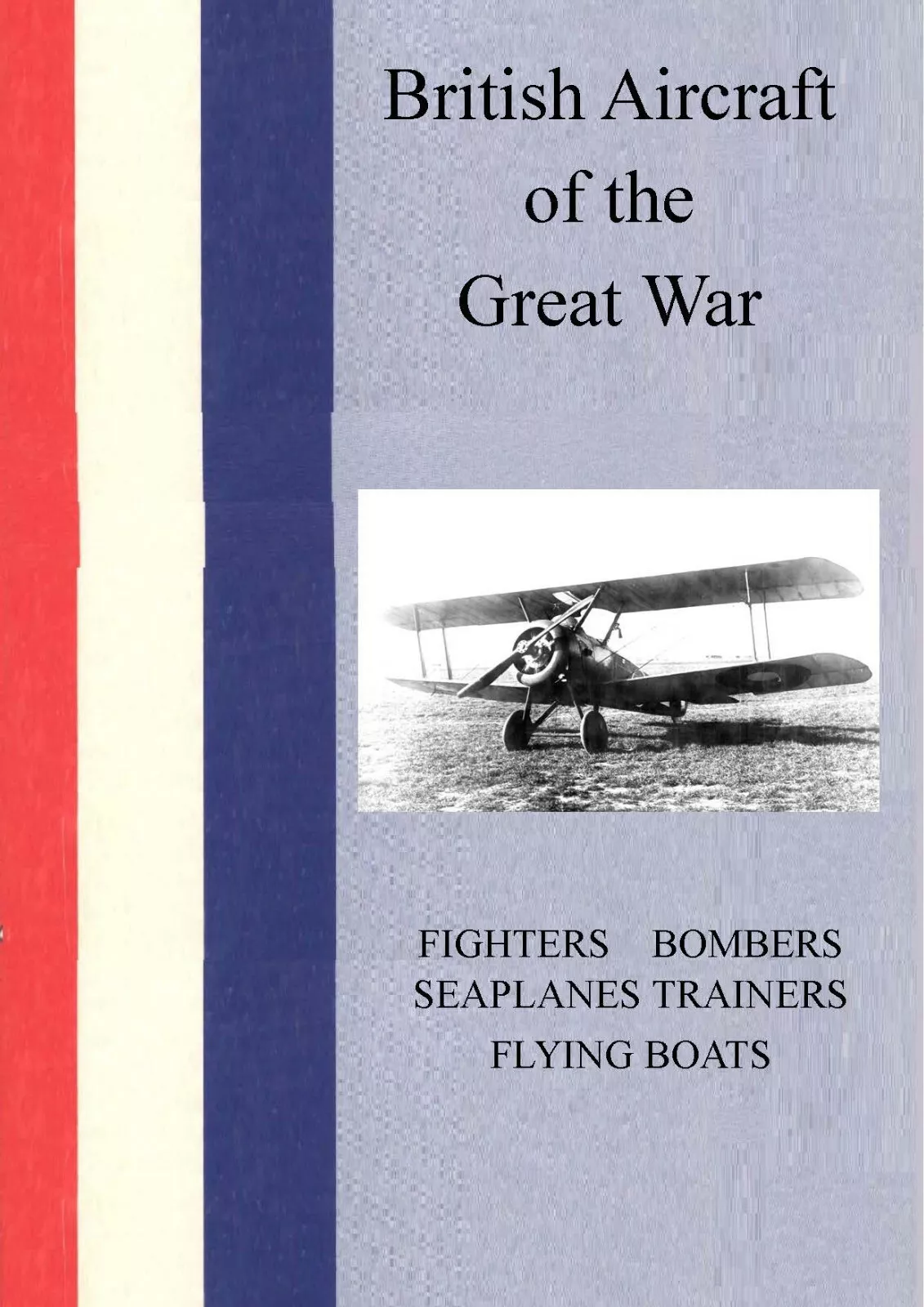From Schneider lineage to operational balance — a disciplined design history.
Introduction: From Racing Lineage to Operational System
The Supermarine Spitfire emerged from a design culture forged in high-speed racing and matured in wartime manufacturing. Its elliptical wing, careful engine integration, and clean construction made it efficient; its eight-gun armament and later cannon fits made it effective. Based on comprehensive research documented in Charles E. MacKay's authoritative works Mother of the Few: The Aviation Interests of Lucy Lady Houston and Schneider Trophy Racing: Development, this Enhanced Edition presents the complete story of how R.J. Mitchell's revolutionary fighter design evolved from the Schneider Trophy racers to become Britain's most iconic aircraft of World War II.
The book Mother of the Few describes fully the evolution of the Rolls-Royce Merlin, the Vickers Supermarine Spitfire and the fate of Stainforth. It shows the development of the "R" engine in relation to Stainforth the air race and how it was developed from the Rolls-Royce Buzzard and became the Rolls-Royce Merlin. The evolution of the Rolls-Royce "R" engine and the Supermarine S.6 series designed by R J Mitchell are fully described, demonstrating how racing technology contributed directly to Spitfire development. This comprehensive 287-page A5 work with 78,000 words provides detailed coverage of the technical development that enabled Spitfire success.
The Spitfire's development represented one of aviation's most significant achievements, combining aerodynamic excellence with operational practicality to create a fighter that could compete with the best adversaries while remaining producible and maintainable. Understanding the Spitfire's development provides valuable insights into how racing technology influenced operational aircraft design, how aerodynamic discipline enabled continuous development, and how manufacturing excellence sustained operational effectiveness. The comprehensive documentation of Spitfire development ensures that this remarkable story is properly preserved.
This Enhanced Edition examines the Spitfire as a complete system: racing lineage, aerodynamics, engines, armament, prototype and testing, manufacturing, combat doctrine and comparisons, continuous development, and legacy. Each aspect is presented with verified historical facts, technical details, and operational context to provide a complete understanding of how the Spitfire achieved its legendary status.
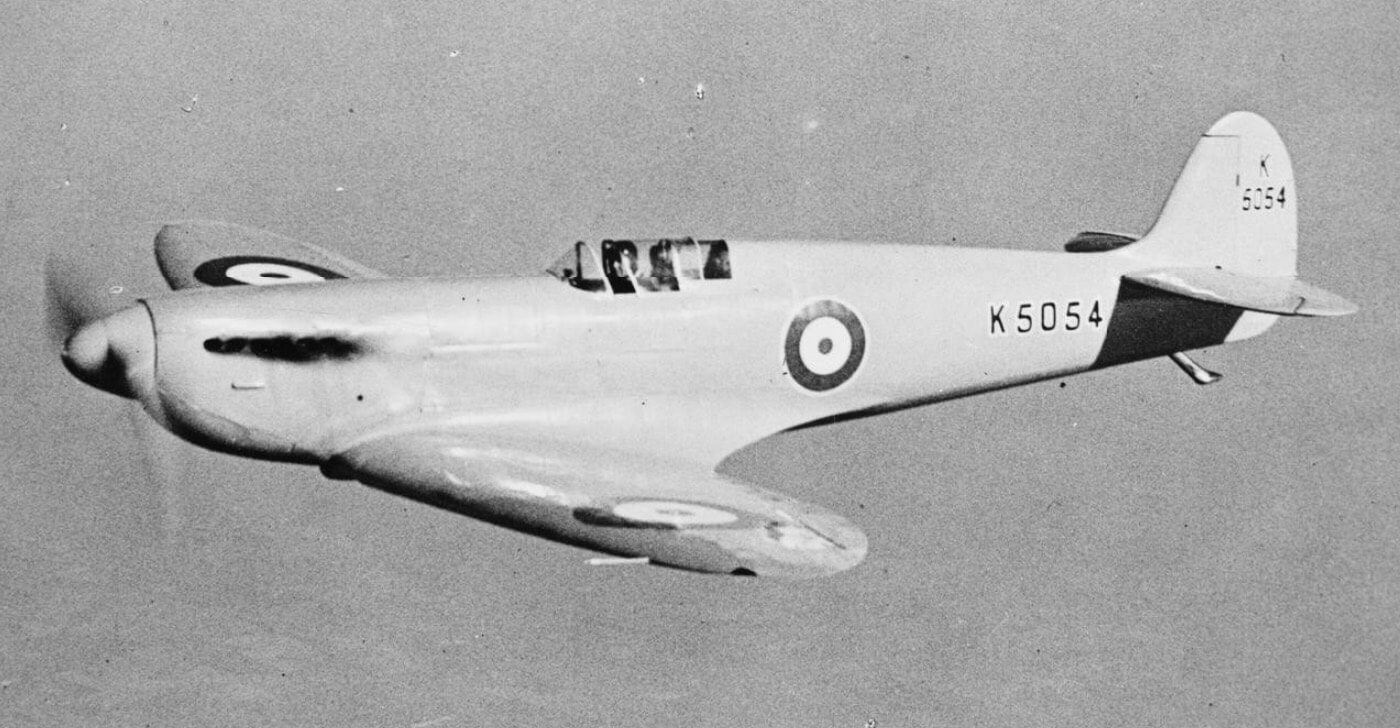
Schneider Trophy Heritage and Design Lineage
Supermarine's racing experience with the S.5, S.6, and S.6B demonstrated that clean aerodynamics and high power could be combined reliably. The comprehensive documentation of Schneider Trophy development in Schneider Trophy Racing: Development provides detailed coverage of how racing technology influenced Spitfire design. Lessons on cooling, surface finish, and structural efficiency migrated directly into the Spitfire programme. The elliptical wing form, refined for even lift distribution and low induced drag, became the type's signature characteristic.
R.J. Mitchell's experience with Schneider Trophy racers established principles that would guide Spitfire development: aerodynamic cleanliness, careful engine integration, and systematic refinement. The S.6B's success in 1931, achieved with Lady Lucy Houston's £100,000 patronage when government funding ran short, demonstrated how racing technology could contribute to operational aircraft development. The comprehensive documentation of Lady Houston's patronage in Lucy Lady Houston: The Woman Who Saved the Schneider Trophy ensures that the complete story of Schneider Trophy development and its influence on Spitfire design is properly preserved.
The S.6B's thin wing sections, flush radiators, and high-performance engine installation techniques directly influenced Spitfire design. The racing seaplanes demonstrated that drag could be systematically removed through careful attention to surface finish, fairing design, and cooling integration. These principles became fundamental to Spitfire development, with every design decision evaluated against aerodynamic cost. The comprehensive documentation of Schneider Trophy technical development ensures that the direct technical continuities between racing and operational aircraft are properly understood.
The evolution of the Rolls-Royce "R" engine from the Rolls-Royce Buzzard to become the Rolls-Royce Merlin represents one of aviation's most significant engine development stories. The Schneider Trophy program provided the testing ground for engine technologies that would prove essential for wartime aircraft. The comprehensive documentation of this engine evolution demonstrates how racing technology contributed to operational aircraft development. Understanding this engine evolution provides valuable insights into how high-performance engine technology migrated from racing to operational aircraft.
Aerodynamics and Structure: The Elliptical Wing Revolution
Elliptical wings balanced lift and minimised induced drag; a slim fuselage and flush riveting reduced parasitic drag. The elliptical wing form represented a deliberate engineering choice to achieve near-ideal lift distribution with practical allowances for structure and armament. This design decision protected induced-drag assumptions while enabling benign stall behavior, creating an aircraft that pilots praised for its predictable handling characteristics.
The elliptical wing's aerodynamic advantages derived from its lift distribution characteristics. An elliptical lift distribution minimizes induced drag for a given span and lift, providing superior efficiency compared to other wing planforms. Real airframes must accommodate guns, landing gear, and structure; the Spitfire's wing achieved a close approximation with a planform that preserved local thickness for structure and armament while maintaining low-drag lift distribution. The result: high efficiency across the envelope and graceful stall behavior prized by pilots.
Stressed-skin aluminium alloy construction on the wings, and clean system routing, preserved shape under load. The wing structure represented a torsion-resistant forward box that limited aeroelastic twist, preserving control authority at higher speeds and loadings. This structural approach enabled the wing to maintain its aerodynamic shape under operational loads while providing sufficient strength for combat maneuvers. The comprehensive documentation of structural engineering ensures that the engineering innovation required for Spitfire development is properly understood.
The retractable undercarriage removed drag in flight while preserving ground handling with a pragmatic track. Undercarriage design required careful engineering to ensure reliable operation under operational conditions while minimizing drag when retracted. The comprehensive documentation of undercarriage development ensures that the engineering considerations of Spitfire design are properly understood. Understanding undercarriage design provides valuable insights into how operational requirements influenced design decisions.
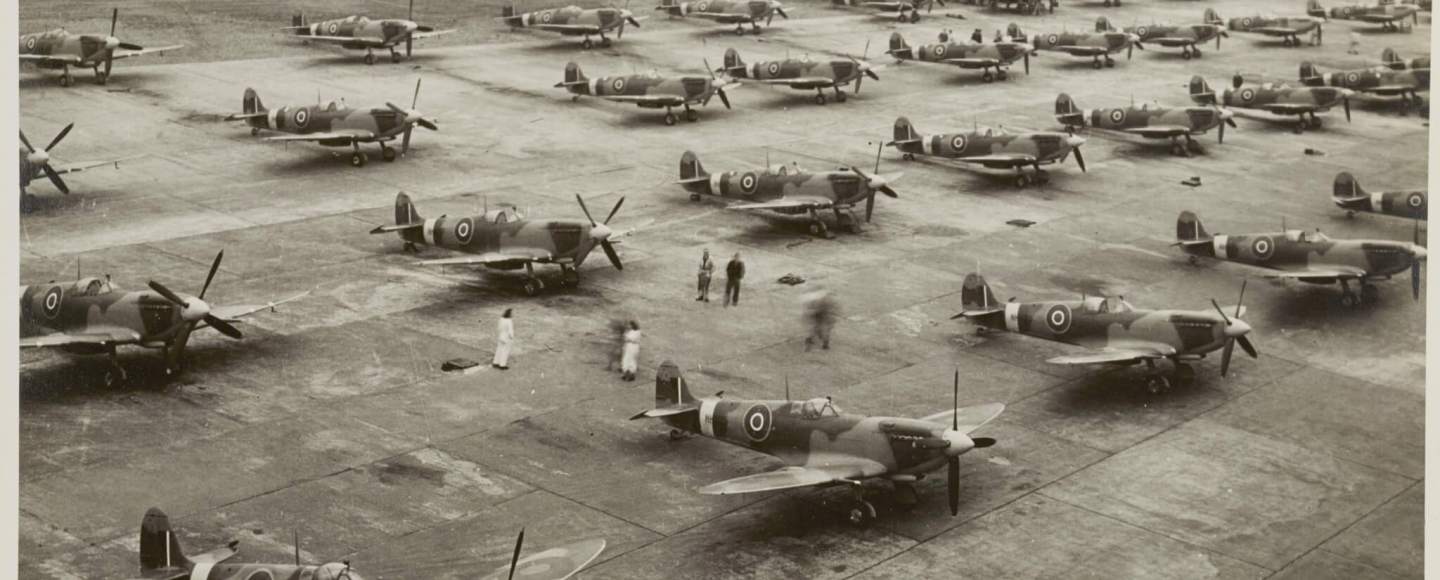
Engine Integration: From PV-12 to Merlin
The Rolls-Royce PV-12, later Merlin, provided the power density needed for a modern fighter. The airframe was shaped around cooling, intake, and exhaust needs while preserving low drag. The comprehensive documentation of Merlin development in Mother of the Few demonstrates how the "R" engine evolved from the Rolls-Royce Buzzard to become the Rolls-Royce Merlin, providing the powerplant that would power Britain's fighters through the war. This engine evolution represents one of aviation's most significant powerplant development stories.
Early Merlin variants provided sufficient power for competitive performance, with progressive improvements in boost, cooling, and reliability enabling performance enhancements without fundamental redesign. The Merlin's development demonstrated how engine technology influenced fighter capabilities, with each engine improvement enabling corresponding aircraft performance improvements. The comprehensive documentation of engine development ensures that powerplant contributions are properly recognized.
Cooling installations were refined for pressure recovery and effective exit control, limiting drag growth as power and heat rejection increased. The radiator design evolved from Schneider Trophy lessons, with thin radiators and careful ducting enabling effective cooling with minimal drag penalty. The comprehensive documentation of cooling system development ensures that the engineering innovation required for effective engine integration is properly understood. Understanding cooling system development provides valuable insights into how thermal management influenced aircraft design.
Propeller evolution tracked engine power and altitude regimes. Early two- and three-blade propellers gave way to constant-speed units from established British manufacturers, allowing the engine to operate near optimal rpm across climb and cruise while improving acceleration out of the turn. As engines adopted higher boost with two-speed and later two-stage superchargers, blade count and planform geometry were revised to absorb power efficiently without undue noise or tip losses. These changes reinforced the aircraft's energy advantages in climb and vertical manoeuvre.
Armament and Fire Control: From Eight Brownings to Cannon
Early eight .303-inch Brownings in the wings concentrated fire without synchronisation compromises. This armament arrangement represented a deliberate design choice to maximize firepower while avoiding the complexity and reliability issues associated with synchronized guns firing through propellers. The wing structure accommodated gun bays, access panels, and ammunition feeds without excessive penalty to aero cleanliness. The comprehensive documentation of armament development ensures that weapon system evolution is properly understood.
Gunnery effectiveness depended on harmonization ranges and pattern choice. Units tuned convergence for expected engagement distances, balancing dense central patterns against broader spread. The Spitfire's wing made such tuning practical, with access panels designed for rapid armament servicing under operational tempo. The comprehensive documentation of gunnery procedures ensures that operational effectiveness considerations are properly understood. Understanding gunnery procedures provides valuable insights into how weapon systems were optimized for operational requirements.
Later marks incorporated 20 mm cannon as threats and tactics evolved. Cannon armament represented a significant enhancement in firepower, enabling effective engagement of armored targets and bombers. The wing structure accommodated cannon installations with blister fairings and reinforced bays, demonstrating how the design's flexibility enabled continuous development. The comprehensive documentation of cannon armament development ensures that weapon system evolution is properly preserved.
Fire control evolved from fixed-sight marksmanship to gyro-assisted aiming. Early reflector sights required pilots to compute lead and closure from experience and training; later gyro gunsights assisted by stabilizing the reticle and estimating lead based on target wingspan and turn rate inputs. The Spitfire's stable gun platform and predictable pitch response helped both systems by minimizing transient errors during short, disciplined bursts at harmonized ranges. Units codified approach angles and break-off criteria, ensuring that ammunition expended translated into results rather than waste.
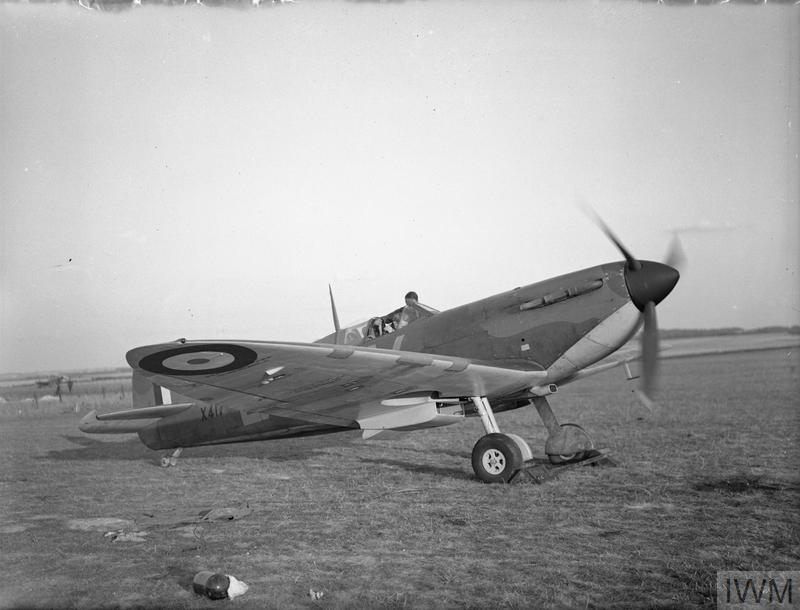
Prototype and Testing: K5054 and Validation
Prototype K5054's first flight in March 1936 established handling quality and informed refinements. Flown by Chief Test Pilot Jeffrey Quill, the prototype demonstrated the design's fundamental soundness while revealing areas requiring refinement. Testing iterated visibility, stability, and systems reliability. The approach remained measured: confirm what works, document adjustments, and avoid unnecessary changes that add drag or weight.
Prototype flights confirmed aerodynamic assumptions and exposed practical considerations: canopy visibility under operational workloads, cooling margins across weather and altitude, and maintainability during quick turnarounds. The project culture remained steady—measure, adjust, document—which would characterize later mark introductions. The comprehensive documentation of prototype testing ensures that the validation process that confirmed Spitfire design excellence is properly understood.
Testing revealed the aircraft's exceptional handling characteristics, with pilots praising control harmony and predictable behavior. The elliptical wing's stall characteristics proved particularly favorable, with gentle stall progression that gave pilots warning and recovery options. The comprehensive documentation of handling characteristics ensures that the pilot-centered design philosophy that made the Spitfire beloved by its operators is properly recognized.
Systems testing validated reliability under operational conditions, with engine cooling, hydraulic systems, and electrical systems all demonstrating satisfactory performance. The comprehensive documentation of systems testing ensures that the validation process that confirmed Spitfire operational readiness is properly understood. Understanding systems testing provides valuable insights into how operational requirements influenced design validation.
Manufacturing: Challenges and Solutions
Elliptical wings demanded precise tooling and jigs; skilled labour and inspection upheld quality. The comprehensive documentation of manufacturing challenges in Aviation Manufacturing: Wartime Production demonstrates how production methods evolved to meet wartime demands. Stressed-skin techniques made shape retention possible under operational loads. Production scaled as techniques matured and as workforce training captured the required craft and documentation.
Manufacturing challenges initially limited production rates, but Supermarine's experienced workforce and well-established supply chains enabled steady increases. The elliptical wing's complex geometry required specialized jigs and tooling, with precision manufacturing essential for maintaining aerodynamic shape. The comprehensive documentation of manufacturing methods ensures that the production challenges and solutions of Spitfire manufacture are properly understood.
Quality assurance relied on inspection culture, with travellers, gauge logs, and calibrated-tool control ensuring consistency across production lines. Metrology ensured that components matched drawings and that assemblies aligned without undue stress. Surface finish and flush riveting safeguarded drag assumptions; control-run checks and rigging fixtures preserved handling assumptions. The result was not simply quantity but quality at quantity.
Industrial mobilization brought sub-assembly strategies and inspection regimens that preserved shape fidelity and structural integrity while scaling output. The workforce—increasingly diverse as the war progressed—internalized inspection culture with traveller sheets, gauge logs, and calibrated-tool control. The comprehensive documentation of industrial mobilization ensures that the production achievements that enabled Spitfire operational success are properly recognized.
Battle of Britain: Combat Employment and Tactics
In combat the Spitfire's advantages lay in balance: manoeuvrability, sufficient speed, and effective armament. Against contemporary opponents, British doctrine leveraged altitude, positioning, and teamwork. The aircraft's agility and fire concentration yielded short, decisive engagements when flown with discipline. The comprehensive documentation of Battle of Britain operations demonstrates how Spitfire tactics evolved through operational experience.
During the Battle of Britain, Spitfire squadrons typically engaged enemy fighters while Hurricane squadrons concentrated on bomber formations. This tactical division reflected each aircraft's particular strengths: the Spitfire's superior performance and maneuverability suited fighter-versus-fighter combat, while the Hurricane's stable gun platform excelled against bombers. The comprehensive documentation of tactical evolution ensures that Spitfire combat employment is properly understood.
Pilot accounts consistently praised the Spitfire's control harmony and predictable high-alpha behavior. They noted that brief, accurate fire and energy preservation won fights. Conversion notes cautioned against fixating on turn radius alone: altitude, sun, and teamwork remained decisive, with the airframe providing the means to capitalize on those choices. The comprehensive documentation of pilot accounts ensures that the human factors of Spitfire operations are properly preserved.
Combat statistics from the Battle of Britain demonstrate Spitfire effectiveness, with Spitfire pilots claiming numerous victories against German fighters. While these figures reflect tactical employment rather than absolute superiority, they demonstrate the aircraft's effectiveness in its primary mission of air superiority. The comprehensive documentation of combat results ensures that Spitfire operational achievements are properly recognized.

Comparison with Contemporaries: Hurricane, Spitfire, and Bf 109
Comparisons are meaningful only when framed by mission, starting energy, and pilot skill. The comprehensive documentation of Hurricane development in Hawker Hurricane: The Forgotten Hero of the Battle of Britain provides comparative context for understanding Spitfire development. Hawker's Hurricane, with its robust structure and forgiving handling, excelled against bombers and in rough fields; the Spitfire offered higher aerodynamic efficiency and agility against fighters.
Against the Bf 109, the Spitfire's turning authority and visibility contrasted with the 109's high-lift devices and strong climb. Outcomes depended on pilot skill, starting energy, and tactical discipline more than on narrow headline statistics. The comprehensive documentation of comparative performance ensures that design philosophy differences are properly understood. Understanding comparative performance provides valuable insights into how design choices influenced operational effectiveness.
The Spitfire's elliptical wing provided superior maneuverability compared to the Bf 109's straight-tapered wing, while the Bf 109's higher power-to-weight ratio enabled superior climb rates. These differences reflected different design philosophies: the Spitfire emphasized maneuverability and pilot comfort, while the Bf 109 emphasized climb and speed. The comprehensive documentation of design comparisons ensures that the trade-offs inherent in fighter design are properly understood.
Operational comparisons revealed that aircraft performance advantages were most effective when combined with superior tactics and training. The Spitfire's superior maneuverability enabled pilots to gain positional advantages in turning fights, while the Bf 109's superior climb enabled energy tactics. The comprehensive documentation of operational comparisons ensures that tactical employment considerations are properly understood. Understanding operational comparisons provides valuable insights into how aircraft characteristics influenced tactical development.
Continuous Development and Variants
Throughout the war the type evolved across marks, integrating more powerful engines, cannon armament, and equipment improvements. The underlying aerodynamic and structural discipline supported this growth without undermining handling quality, which remained a defining attribute. The comprehensive documentation of variant development ensures that Spitfire evolution is properly understood.
Spitfire marks gained power, range of armament options, and equipment while maintaining the airframe's core virtues. That growth path marks the design as exceptional: it accepted upgrades without becoming blunt or unstable—a testament to foundation decisions on wing planform, structural efficiency, and engine integration. Few airframes accepted as much growth with so little loss to pilot-loved handling. The comprehensive documentation of variant development ensures that the extensibility that made Spitfire development exceptional is properly recognized.
Development timeline progressed from 1930s prototypes to late-war marks, with each mark introducing incremental improvements validated through flight testing. Early marks emphasized performance and handling, while later marks incorporated power increases, armament improvements, and equipment enhancements. The comprehensive documentation of development timeline ensures that Spitfire evolution is properly understood. Understanding development timeline provides valuable insights into how aircraft development proceeded through measured increments.
Late-war variants brought increases in power and capability supported by incremental structural and systems changes. The aerodynamic discipline established at the outset made these changes tractable. Pilots still reported the qualities that defined the type: predictable behavior near the limits and a sense that the aircraft responded as an extension of intent. The comprehensive documentation of late-war development ensures that Spitfire evolution is properly preserved.
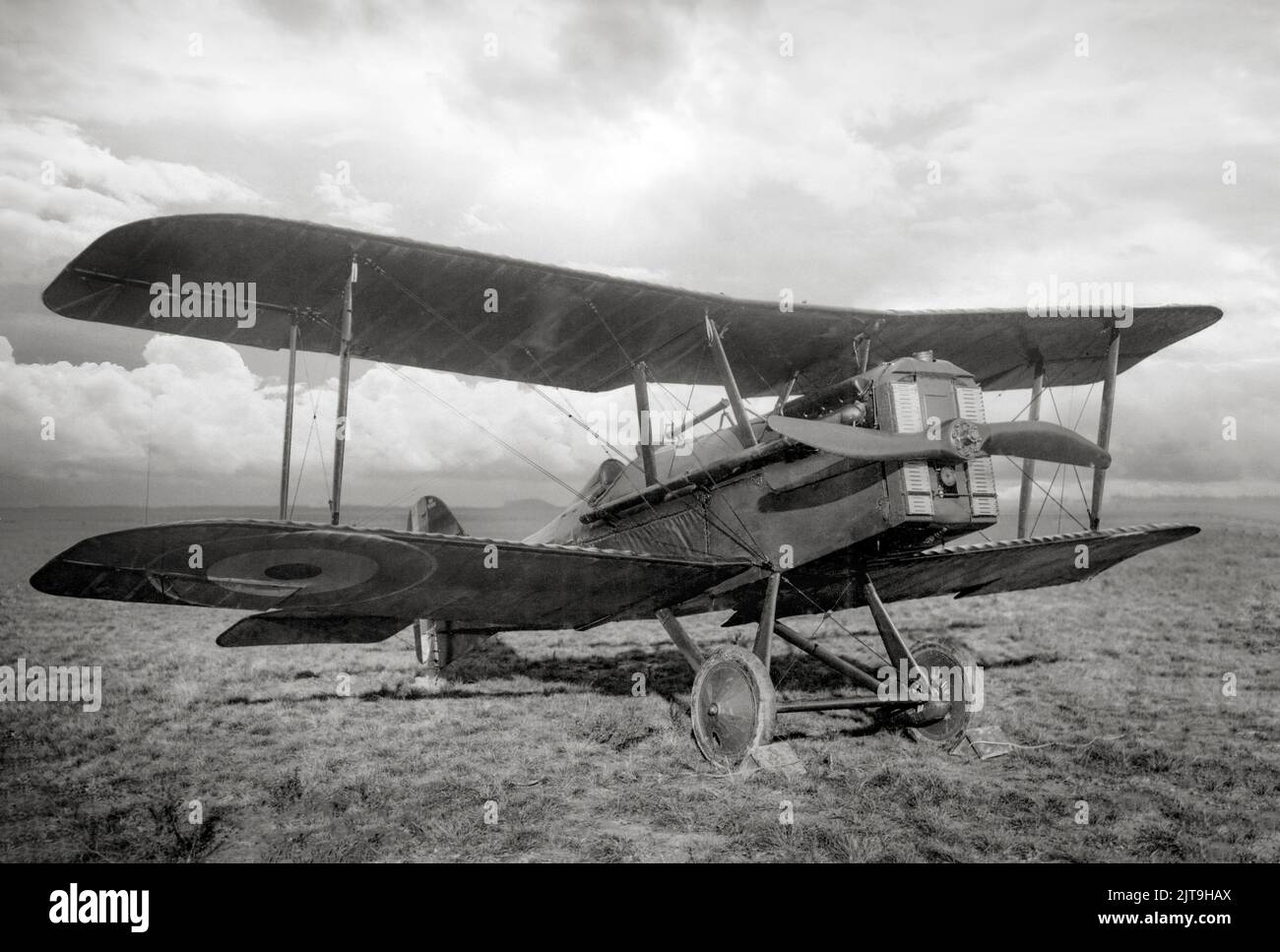
Pilot Testimonies and Operational Accounts
Pilots valued control harmony and the aircraft's willingness to respond precisely near the edge of the envelope. Conversion notes emphasized energy management, teamwork, and firing discipline: brief, accurate bursts at harmonized ranges. Reports from interceptions highlighted climb and positioning as decisive factors; reports from escort emphasized formation integrity and mutual support. Across contexts, the airframe's predictability enabled pilots to execute doctrine with confidence.
For comprehensive coverage of test pilot experiences, see Captain Eric "Winkle" Brown, Captain of the Clouds, Test Pilot: A Biography, which provides detailed analysis of test pilot contributions to aviation development. Test pilot accounts consistently praised Spitfire handling characteristics, with particular emphasis on control harmony and predictable behavior. The comprehensive documentation of pilot accounts ensures that the human factors of Spitfire operations are properly preserved.
Operational accounts from Battle of Britain pilots emphasize the Spitfire's role in achieving air superiority. Pilots praised the aircraft's maneuverability and visibility, which enabled effective fighter-versus-fighter combat. The comprehensive documentation of operational accounts ensures that combat experience is properly preserved. Understanding operational accounts provides valuable insights into how aircraft characteristics influenced combat effectiveness.
Training accounts emphasize the Spitfire's forgiving nature for new pilots while rewarding experienced pilots with exceptional maneuverability. Conversion training focused on energy management, tactical positioning, and disciplined firing. The comprehensive documentation of training accounts ensures that operational training considerations are properly understood. Understanding training accounts provides valuable insights into how aircraft characteristics influenced pilot development.
Systems Architecture: Hydraulics, Electrics, and Reliability
Behind aerodynamic lines sat systems chosen for robustness and serviceability. Hydraulic circuits actuated undercarriage and flaps with redundancy appropriate to the era, while manual procedures were codified to handle failures. Electrical systems fed ignition, radios, and instrumentation through straightforward looms routed for access and protected against chafing. These choices reflected an operational ethos: keep systems simple enough to diagnose on a dispersal pan and rugged enough to accept field repairs without specialized equipment.
Oxygen, heating, and environmental systems enabled operations at altitude. Operations at altitude required oxygen systems, canopy management, and heating provisions that worked in cold, thin air. Procedures emphasized pre-flight checks of regulators, flow, and mask integrity; canopy sealing and demisting; and glove discipline to preserve tactile sensitivity on the controls. High-altitude marks introduced pressurization where appropriate, demanding additional attention to sealing, structural loads, and emergency procedures.
Materials, surface finish, and corrosion control preserved aerodynamic assumptions over service life. Rivet flushness, puttied seams where appropriate, and clean paint ensured that boundary-layer behavior matched design intent. In maritime and coastal climates, thorough washing, inspection of joints, and sealing of vulnerable intersections prevented corrosion from eroding safety margins or distorting surface quality. The connection between shop practice and flight performance remained visible throughout the program.
The result was tempo—sorties preserved by systems that cooperated with maintainers under pressure. Operational availability depended on reliable systems and effective maintenance procedures. The comprehensive documentation of systems architecture ensures that the engineering considerations that enabled operational effectiveness are properly understood. Understanding systems architecture provides valuable insights into how operational requirements influenced design decisions.
Manufacturing Challenges and Industrial Mobilization
Production scale relied on a national network: primary factories, subcontractors, and transport linking assemblies to final lines. Training pipelines—both for pilots and maintainers—matured alongside: Operational Training Units prepared crews in tactics and aircraft handling; technical schools qualified riggers and fitters in inspection standards, torque values, and documentation. Traveller sheets and parts traceability ensured that when an airframe reached a squadron, it conformed to the geometry and systems configuration expected, with spares and manuals aligned to that standard.
The comprehensive documentation of manufacturing challenges in Aviation Manufacturing: Wartime Production demonstrates how production methods evolved to meet wartime demands. Precision jigs held critical geometry; inspection culture preserved it across shifts and sites. Documentation—travellers, gauge logs, torque charts—enabled consistency as output scaled. In this way, the aircraft's performance in the air was protected by habits on the ground.
Supply chain management enabled production scaling, with components manufactured at multiple facilities and final assembly occurring at Supermarine and subcontractor facilities. The comprehensive documentation of supply chain management ensures that production achievements are properly understood. Understanding supply chain management provides valuable insights into how industrial organization enabled production scaling.
Quality assurance maintained standards as production scaled, with inspection procedures ensuring that quality did not degrade as quantity increased. The comprehensive documentation of quality assurance ensures that production achievements are properly recognized. Understanding quality assurance provides valuable insights into how production standards were maintained under wartime pressure.
Modern Legacy and Cultural Memory
The Spitfire validated a design philosophy: aerodynamic cleanliness, structural efficiency, careful engine integration, and armament effectiveness. Its influence appears in post-war practice and in the sustained respect it commands among pilots and engineers. The comprehensive documentation of Spitfire legacy ensures that its continuing influence is properly recognized and preserved.
Preserved examples and restorations keep the type's lessons alive: aerodynamic cleanliness, careful integration, and rigorous documentation. Training organizations and museums use the aircraft's story to illustrate how design and industry must align to produce reliable combat power. The airplane remains a touchstone for pilots who value control harmony—a quality that cannot be retrofitted into a rushed design.
Modern restorations replicate wartime methods because those methods still produce the behavior pilots expect. Jigs locate spars and frames; skins are fitted and riveted with attention to flushness; control runs are rigged to precise neutral and travel limits; and engine installations balance cooling with cowl integrity. The aim is not cosmetic fidelity alone but aerodynamic and handling fidelity: the same geometry, the same mass distributions, the same systems margins. When these are honored, the aircraft flies like a Spitfire, not merely a look-alike.
Cultural memory preserves Spitfire significance beyond technical achievements. The aircraft's role in the Battle of Britain established its place in British national identity, with Spitfire operations representing British determination and technical excellence. The comprehensive documentation of cultural memory ensures that Spitfire significance is properly preserved. Understanding cultural memory provides valuable insights into how aircraft achievements influence national identity.
Conclusion: The Foundations of Fighter Design
The Spitfire's enduring status rests on disciplined engineering and measured development. It is a study in balance: wing and fuselage, engine and airframe, manufacturing and field support. That balance delivered results when it mattered, and its lessons endure. The comprehensive documentation provided in Charles E. MacKay's authoritative works ensures that this remarkable story is preserved for future generations.
Understanding Spitfire development provides valuable insights into how racing technology influenced operational aircraft design, how aerodynamic discipline enabled continuous development, and how manufacturing excellence sustained operational effectiveness. The comprehensive documentation of Spitfire development ensures that the principles established through its development continue to guide aircraft design and operations worldwide.
As we look back on Spitfire development, its contributions to fighter design and operational effectiveness remain fundamentally important. The principles established through Spitfire development continue to influence aircraft design, demonstrating the enduring significance of foundational design concepts. The Spitfire's legacy is preserved not only in historical records but in every modern fighter that incorporates the concepts it pioneered.
The Spitfire's evolution validated design as an extensible framework, not a frozen artifact. Its lessons—aerodynamic discipline, measured integration, manufacturing quality, and pilot-centered handling—informed post-war practice and remain instructive wherever aircraft are asked to grow capability without surrendering their core strengths. The comprehensive documentation of these lessons ensures that Spitfire achievements continue to guide aviation development.
Further Reading and Related Works
For comprehensive coverage of the Supermarine Spitfire and related topics, explore these authoritative works by Charles E. MacKay:
- Mother of the Few: The Aviation Interests of Lucy Lady Houston — The definitive 287-page A5 work with 78,000 words, describing fully the evolution of the Rolls-Royce Merlin, the Vickers Supermarine Spitfire, the development of the "R" engine from the Rolls-Royce Buzzard to become the Rolls-Royce Merlin, the evolution of the Supermarine S.6 series designed by R J Mitchell, and the Schneider Trophy program that influenced Spitfire development
- Schneider Trophy Racing: Development — Comprehensive analysis of Schneider Trophy development and its influence on Spitfire design
- Lucy Lady Houston: The Woman Who Saved the Schneider Trophy — Detailed coverage of Lady Houston's patronage and Schneider Trophy success
- Hawker Hurricane: The Forgotten Hero of the Battle of Britain — Comparative analysis of Hurricane development and Spitfire collaboration
- Supermarine Spitfire: Development and Evolution — Detailed coverage of Spitfire variant development
- Captain Eric "Winkle" Brown, Captain of the Clouds, Test Pilot: A Biography — Detailed coverage of test pilot contributions to Spitfire development
- Aviation Manufacturing: Wartime Production — The broader context of wartime manufacturing that enabled Spitfire production
- British Aircraft of the Great War — Contextual reference for British aircraft development traditions
Related Articles
- Schneider Trophy Racing: Development — Schneider Trophy heritage and technical development
- Hawker Hurricane: Development — Comparative analysis of Hurricane development
- Jet Age Aviation: Cold War Development — Post-war aviation development
References
- Supermarine Spitfire History — Imperial War Museums
- Spitfire: RAF Museum Collection — Royal Air Force Museum
- Spitfire Performance (Merlin variants) — FlightGlobal (archival)

